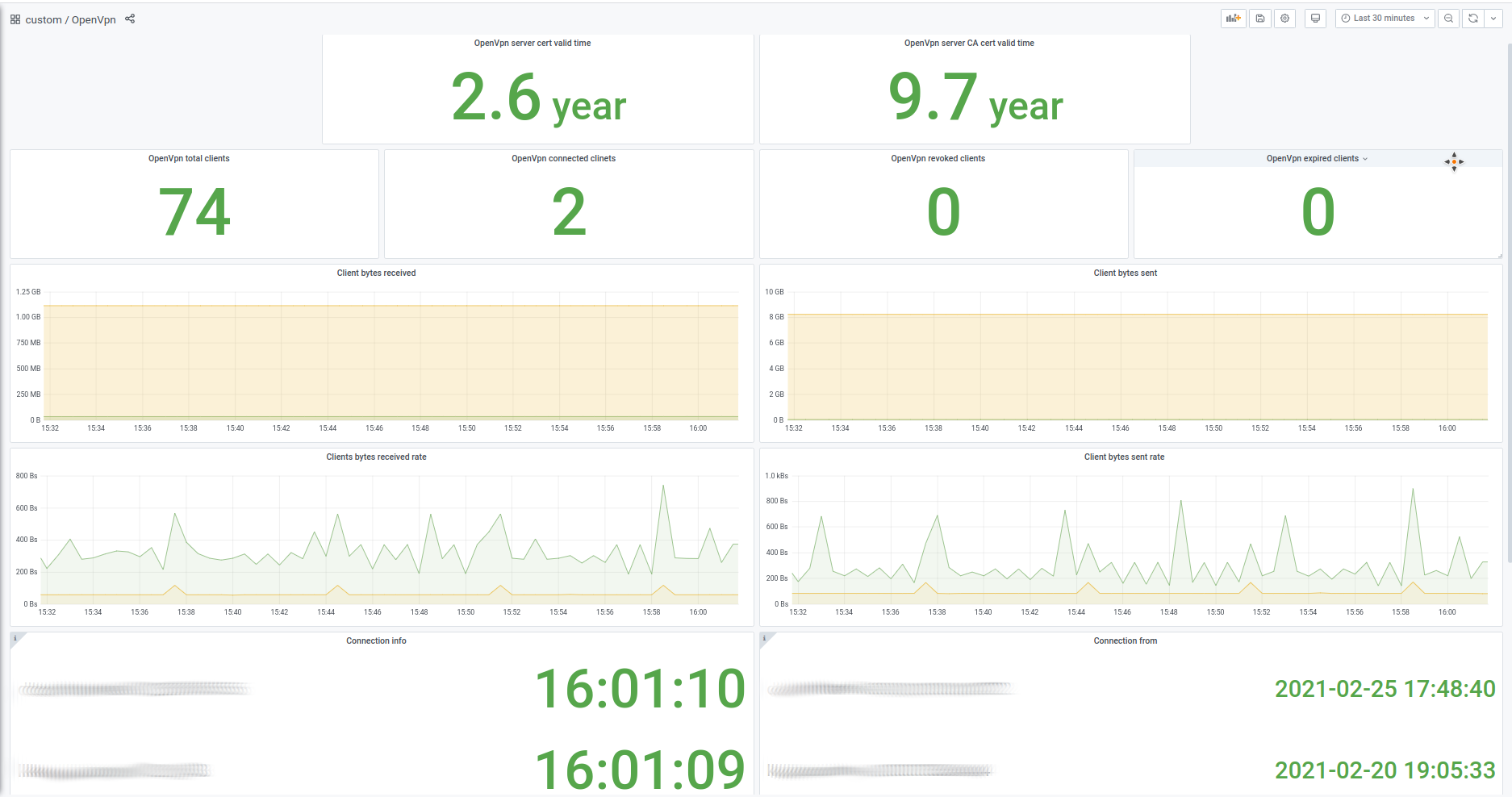5.8 KiB
ovpn-admin
Simple web UI to manage OpenVPN users, their certificates & routes in Linux. While backend is written in Go, frontend is based on Vue.js.
Originally created in Flant for internal needs & used for years, then updated to be more modern and publicly released in March'21. Your contributions are welcome!
Features
- Adding OpenVPN users (generating certificates for them);
- Revoking/restoring users certificates;
- Generating ready-to-user config files;
- Providing metrics for Prometheus, including certificates expiration date, number of (connected/total) users, information about connected users;
- (optionally) Specifying CCD (
client-config-dir) for each user; - (optionally) Operating in a master/slave mode (syncing certs & CCD with other server);
- (optionally) Specifying/changing password for additional authorization in OpenVPN;
- (optionally) Specifying the Kubernetes LoadBalancer if it's used in front of the OpenVPN server (to get an automatically defined
remotein theclient.conf.tpltemplate).
Screenshots
An example of dashboard made using ovpn-admin metrics:

Installation
Disclaimer
This tool uses external calls for bash, coreutils and easy-rsa, thus Linux systems only are supported at the moment.
1. Docker
There is a ready-to-use docker-compose.yaml, so you can just change/add values you need and start it with start.sh.
Requirements. You need Docker and docker-compose installed.
Commands to execute:
git clone https://github.com/flant/ovpn-admin.git
cd ovpn-admin
./start.sh
2. Building from source
Requirements. You need Linux with the following components installed:
Commands to execute:
git clone https://github.com/flant/ovpn-admin.git
cd ovpn-admin
./bootstrap.sh
./build.sh
./ovpn-admin
(Please don't forget to configure all needed params in advance.)
3. Prebuilt binary (WIP)
You can also download and use prebuilt binaries from the releases page — just choose a relevant tar.gz file.
To use password authentication (the --auth flag) you have to install openvpn-user. This tool should be available in your $PATH and its binary should be executable (+x).
Usage
usage: ovpn-admin [<flags>]
Flags:
--help show context-sensitive help (try also --help-long and --help-man)
--listen.host="0.0.0.0" host for ovpn-admin
(or $OVPN_LISTEN_HOST)
--listen.port="8080" port for ovpn-admin
(or $OVPN_LISTEN_PROT)
--role="master" server role, master or slave
(or $OVPN_ROLE)
--master.host="http://127.0.0.1"
(or $OVPN_MASTER_HOST) URL for the master server
--master.basic-auth.user="" user for master server's Basic Auth
(or $OVPN_MASTER_USER)
--master.basic-auth.password=""
(or $OVPN_MASTER_PASSWORD) password for master server's Basic Auth
--master.sync-frequency=600 master host data sync frequency in seconds
(or $OVPN_MASTER_SYNC_FREQUENCY)
--master.sync-token=TOKEN master host data sync security token
(or $OVPN_MASTER_TOKEN)
--ovpn.network="172.16.100.0/24"
(or $OVPN_NETWORK) NETWORK/MASK_PREFIX for OpenVPN server
--ovpn.server=HOST:PORT:PROTOCOL ...
(or $OVPN_SERVER) HOST:PORT:PROTOCOL for OpenVPN server
can have multiple values
--ovpn.server.behindLB enable if your OpenVPN server is behind Kubernetes
(or $OVPN_LB) Service having the LoadBalancer type
--ovpn.service="openvpn-external"
(or $OVPN_LB_SERVICE) the name of Kubernetes Service having the LoadBalancer
type if your OpenVPN server is behind it
--mgmt=main=127.0.0.1:8989 ...
(or $OVPN_MGMT) ALIAS=HOST:PORT for OpenVPN server mgmt interface;
can have multiple values
--metrics.path="/metrics" URL path for exposing collected metrics
(or $OVPN_METRICS_PATH)
--easyrsa.path="./easyrsa/" path to easyrsa dir
(or $EASYRSA_PATH)
--easyrsa.index-path="./easyrsa/pki/index.txt"
(or $OVPN_INDEX_PATH) path to easyrsa index file
--ccd enable client-config-dir
(or $OVPN_CCD)
--ccd.path="./ccd" path to client-config-dir
(or $OVPN_CCD_PATH)
--templates.clientconfig-path=""
(or $OVPN_TEMPLATES_CC_PATH) path to custom client.conf.tpl
--templates.ccd-path="" path to custom ccd.tpl
(or $OVPN_TEMPLATES_CCD_PATH)
--auth.password enable additional password authorization
(or $OVPN_AUTH)
--auth.db="./easyrsa/pki/users.db"
(or $OVPN_AUTH_DB_PATH) database path for password authorization
--debug enable debug mode
(or $OVPN_DEBUG)
--verbose enable verbose mode
(or $OVPN_VERBOSE)
--version show application version
Further information
Please feel free to use issues and discussions to get help from maintainers & community.
